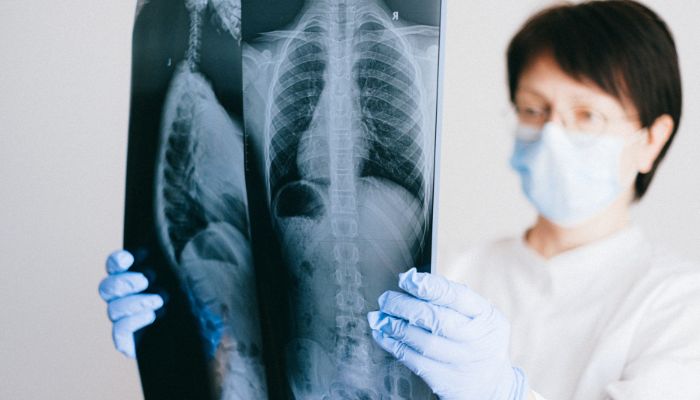|
Results could help researchers develop targeted scleroderma therapies by Patricia Inácio, PhD | March 19, 2024 Lung disease severity in scleroderma (SSc) patients may be linked to levels of immune cells known as follicular T-helper cells (Tfh cells), according to a small study. The findings “may guide the development of targeted therapies for this aspect of the disease,” the researchers wrote. Titled “The relationship between peripheral T follicular helper cells and disease severity in systemic sclerosis,” the study was published in the journal Clinical and Experimental Medicine. In scleroderma, the immune system produces self-targeting antibodies, or autoantibodies, that lead to hardening and fibrosis (thickening or scarring) of the skin. It sometimes affects internal organs as well. B-cells are responsible for producing antibodies, but evidence suggests that Tfh also may play a role in scleroderma. Tfh cells are a specialized subset of T-cells that support the antibody production of B-cells and have been implicated in autoimmune diseases such as multiple sclerosis and myasthenia gravis. However, a link between t-helper cells and disease severity in SSc has not been established. Seeking a link between t-helper cells and disease severity
Now, researchers in Turkey sought to investigate the link between circulating Tfh cells and disease severity in scleroderma. To that end, they analyzed data from 50 scleroderma patients, 46 of them women, with a mean age 59.2, and followed them for a median of nine years. In all, 62% of the patients had diffuse cutaneous systemic sclerosis (dcSSc), which involves the internal organs as well as the skin. The remainder had limited cutaneous SSc (lcSSc), which is characterized by skin symptoms limited to the face, lower arms, hands, and fingers. As for SSc-associated autoantibodies, 11 patients were positive for anti-centromere antibodies and 22 for anti-Scl-70 antibodies. The dcSSc patients had a higher mean modified Rodnan skin score (mRSS), a measure of skin thickness. Disease severity was determined according to the Medsger scale, an assessment of nine organ systems. The dcSSc group had a mean Medsger score of 5.2, and the group of patients with lcSSc had a mean score of 4, a difference that wasn’t statistically significant. Researchers also saw no differences between the groups on markers of inflammation, including erythrocyte sedimentation rate and C-reactive protein, or in the percentages of distinct types of T-cells with the CD4 protein marker on the surface. Also, no correlation was found between the CD4-positive T-cells and both mRSS and the Medsger scale. However, the mean number of CD4-positive T-cells expressing the CXCR5 protein receptor was higher in scleroderma patients with Raynaud’s phenomenon, digital ulcers, heart involvement, and lung involvement. Raynaud’s phenomenon, characterized by numb, tingly, and cold fingers and toes in response to low temperatures or stress, is caused by excess collagen. A correlation also was noted by researchers between more severe lung disease and higher levels of T-cells with both the CD4 and the CXCR5 markers in scleroderma patients. Overall, according to the researchers, the findings support a “potential role for Tfh cells in the pathogenesis [disease processes] of lung involvement in SSc.” “This study contributes valuable insights into the relationship between Tfh cells and disease severity in SSc,” the team wrote. They cautioned, however, that the sample size was relatively small, so the results might not apply to a broad population. Comments are closed.
|
AuthorScleroderma Queensland Support Group Archives
July 2024
Categories
All
|
Scleroderma Association of Queensland
©Scleroderma Association of Queensland. All rights reserved. Website by Grey and Grey.

